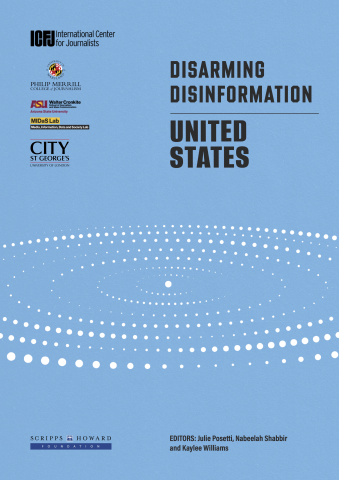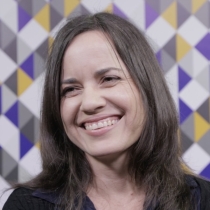Disarming Disinformation Research: United States Case Study
In the second country case study published under the Disarming Disinformation project, we examine the critical role played by the ethnic and Indigenous press in countering disinformation in the U.S.., We highlight unique challenges ethnic and Indigenous outlets face related to disinformation during the 2024 U.S. presidential election.The findings come from a far-reaching, mixed methods analysis of news articles, social media posts, public opinion data and in-depth interviews with journalists who are on the front lines in the fight against rising authoritarianism in the U.S.
The report presents 22 recommendations for newsrooms, journalism-supporting civil society organizations and others based on insights from case studies focused on Asian American, Black, Indigenous and Latino news outlets with diverse business models, ownership structures and approaches to counter-disinformation work.
This study is based on research led by ICFJ researchers in collaboration with academics from Arizona State University, the University of Maryland and the City St. George’s University of London, which involved:
- Computational and manual analysis of over 10,000 news articles and social media posts during the 2024 presidential election
- In- depth case studies focused on five media outlets serving Black, Indigenous, Latino and Asian American communities in the U.S.
- Interviews with 45 U.S. journalists working for the Indigenous and ethnic press
- A public opinion survey of 1,020 American adults focused on attitudes to disinformation, targeted attacks on the press and the news media’s democratic function.

Among our key findings:
- U.S. President Donald Trump was the dominant source and distributor of disinformation appearing in the ethnic and Indigenous press during the 2024 election, highlighting the function of domestic political forces, rather than foreign state actors, as the primary source of disinformation narratives in U.S. political discourse.
- WhatsApp groups, WeChat channels and other closed digital spaces often act as “information cocoons” for mono-linguistic communities, allowing rumors and other forms of disinformation to spread unabated. Ethnic outlets respond to this challenge by monitoring those spaces, engaging directly with users in their language and publishing timely, in-context reporting that addresses specific claims.
- Financial scams are a persistent, cross-community threat, and many research subjects report that scams often travel through the same channels as political falsehoods.
- The exclusion or willful omission of Indigenous community voices in public discourse, including through mainstream media coverage, feeds disinformation, and fuels racist narratives. Indigenous journalists described a tendency by the mainstream press to only cover Indigenous issues or people in moments of tragedy or destitution, effectively erasing the everyday experiences and agency of their communities from public awareness and political discourse.
- 86% of Americans say they have seen or heard journalists being harassed or abused online, indicating wide visibility and the normalization of such attacks. This reflects the targeted political attacks on the press, which escalated during the 2024 election campaign, with minority and minoritized journalists being particularly vulnerable. This reinforces our call for stronger platform accountability, improved newsroom safety protocols, and public education around the vital role of journalism in a liberal democracy which purportedly values press freedom.
- Trust in the mainstream press continues to decline in a climate of increasing attacks on the news media by the Trump administration. But our survey revealed that participants identifying as people of color (POC) were less likely to ‘distrust’ the press, with 32% of POC participants expressing distrust in the news, compared to 44% of white-identifying participants.
Research for the Disarming Disinformation project was conducted with lead support from the Scripps Howard Foundation. Additional support for research was provided by the Gates Foundation.

